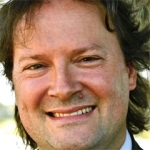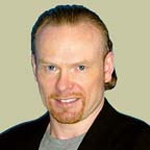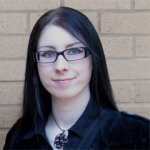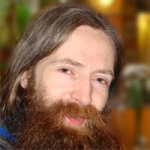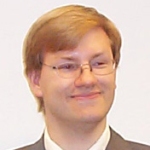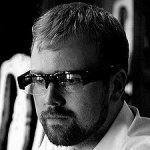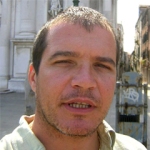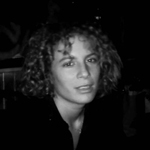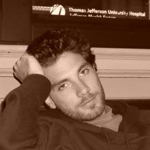

Driven by extremes of ambitions, hope, aspirations, expectations; yet shackled by paroxisms of insanity, doubt, conceit, lazyness, pain, sexual depravity, despair and intransience, the person who has chosen to call herself ‘Khannea Suntzu’ is a western European artist. In fact Khannea is not one person, but several associated artists working together. Respective ‘real world’ identities and conventions of these people are no longer relevant — they have discarded their soul to a greater cause – the manifestation and incarnation of something Khannea refers to as ‘Lilith’ as an artillect. To this effect the cause of worldwide transhumanism is a means to an end – for Khannea transhumanism, (and specifically the ideals and values espoused by the smaller ‘Order of Cosmic Engineers’) signify a future where individuals have vastly amplified power over a vastly expanded world.
Khannea knowingly is a traitor to humanity having sold herself to the machine deities before they even exist. Khannea states “you cannot engineer a posthuman future. You cannot lobby for it, or have it voted through parliament or legislate it. It must be a work of art, or a labour of love — or it must be like making love, insemination, conception and giving birth, even if we while doing so risk sacificing the mother… because you can’t do any but hope for something better…”
Madness? Almost certainly. Irony with a hidden agenda? No doubt? Culture Jamming? You have a solemn guarantee!… It is all banter with a plan. A highly lateral plan, a highly holistic plan.
The interests of the artists known as Khannea lie in the realms of augmented reality, virtual reality, life extension, artificial intelligence, space industrialization, nanotechnology, body sculpting, extended sexual revolutions, uploading, nootropics, paradise engineering, gaming, basic income, robotics and far stranger things. If Khannea gets her way we’ll all end up being better humans because of it, and hopefully something better than humans as well.
As her influences she mentions (or constantly repeats to the points of being annoying) David Pearce, Extropia DaSilva, Aubrey de Grey, Marshall Brain, Larry Niven, Syd Mead, Ron Cobb, Kevin Warwick, Jamais Cascio, Martine Rothblatt, Hugo DeGaris, Anders Sandberg, Nick Bostrom, Mike Annisimov, Ray Kurzweil, Jacques Fresco, Zizek, Bruce Sterling, Philippe van Nedervelde, Natasha Vita-More, Kelly Lebroc, H.R. Giger, Armenius and quite a few others.
At TransVision 2010 Khannea will present a work of futurist art dedicated to space colonization: Terasem 1. On the long history of the terasem l4 space colony, a blog dedicated to Terasem 1, Khannea writes;
“I was bought and sold, somewhere in the mnid 1980s, when I read the book ‘the high frontier’, by Gerald K. O’Neil. His proposals were so elegant. I still think that this is the road to go forward for humanity, and probably the only way to retain and expand our humanity (and our abundance). It was an almost surreal experience to then receive support of Mrs. Martine Rothblatt in this amazing endeavor – to literally be instrumental in the construction of model of a Bernal Sphere/island One habitat according to the vision of Gerald. I was like a dream come true.
.
The guy doing most of the work is Simon Deering (not hotdogs!), the prop builder who managers creatrix.nl, [and someone I deeply admire] – Simon has involved in the work on the original movie Alien and he is a career model crafter. This will be one amazing journey culminating in the Tranvision conference in October this year, where we will present the model and give it over to Mrs. Rothblatt, after which we assume she will put it on display in one of the Terasem offices.
Take this journey with me and see how the vision Gerald formulated a life time ago can still enchants and puts stars in your eyes.”
I wish to encourage all readers to subscribe to and read Khannea’s blog the long history of the terasem l4 space colony, where she documents the design, planning, construction and deployment of the artwork. Terasem is one of the organizations most active on space colonization and other grand transhumanist visions, and I hope the Terasem 1 sculpture, once installed at terasem, will motivate Terasem staff to do something to really go to space, and for good. Read also Khannea’s personal blog. In a previous post titled Transvision 2010 Blurb, Khannea further details her vision:
“Terasem 1, a model that should have been made ten years ago. The actual construction of these habitats should have started twenty years ago.
The model is a detailed prop depicting a Bernal Sphere along the designs of Gerald K O’Neil. Gerald wrote the book ‘the high frontier’ in the early 1970s (when we started having those oil crisis) and even then the book captivated a small but perceptive generation of visionaries. The vision of the High Frontier is not an easy digestible one — it builds on series of cumulatively more abstract steps well into the sky, and beyond into the depths of space. The High Frontier is no less poignant a statement as it was in the 1970s and we need solutions put forth in the book more than ever.
The message is clear — even though the majority of human beings in this planet gravitate between ‘let other people sort it out’, blank ignorant apathy or a passive aggressive ‘don’t bother me with difficult issues’ we face insurmountable challenges to retain any appreciable level of our level of pluriform civilisation and industries in the next century. Instead of facing up to challenges we all flee in short term thinking and hollow consumerism.
The challenge in 2010 is – A world with ten billion people that has to relinquish acces to 15+ terawatt of energy consumptions is a world where very soon more than 5 billion will be dying.
The High Frontier charts out a solution that at every single step makes sense, from an egineering perspective. The price of this undertaking is high and potentially unaffordable in the current macro-economic and political climate, but it remains to this day the only way for modern society to expand, grow and become significantly more affluent.
The alternative has become unthinkable.
The road ahead is simple – do whatever it takes to create an industrial base in space. Mine asteroids and the moon. Make the colony self-sufficient. Build a SSPS (solar satelite power station) producing in the order of a gigawatt. Build another every year and (after a decade) every month. Rinse repeat, add space elevators, colonies on other planets and – habitats. The key here is — adding habitats – safe and very comfortable permanent colonies in space. Enormous and equally implausible structures housing (initially) tens of thousands of people and (eventually) being a key destination for emigration of the human race into the rest of the solar system. Bear in mind — if properly exploited, just the ateroid belt alone holds sufficient minerals to build these habitats to make very comfortable living space equivalent to the earth’s landmass thousands of times over. That would in effect mean that after 25 or so years of doing this, energy availability would be bigger than acute demand, and energy prices will be falling sharply and irreversibly.
The message with this habitat is — does humanity choose stagnation and irrelevance, or is humanity capable of making the sacrifices to expand without little limit, indefinitely and in all directions? Look into this vision and can you imagine yourself living there?“
